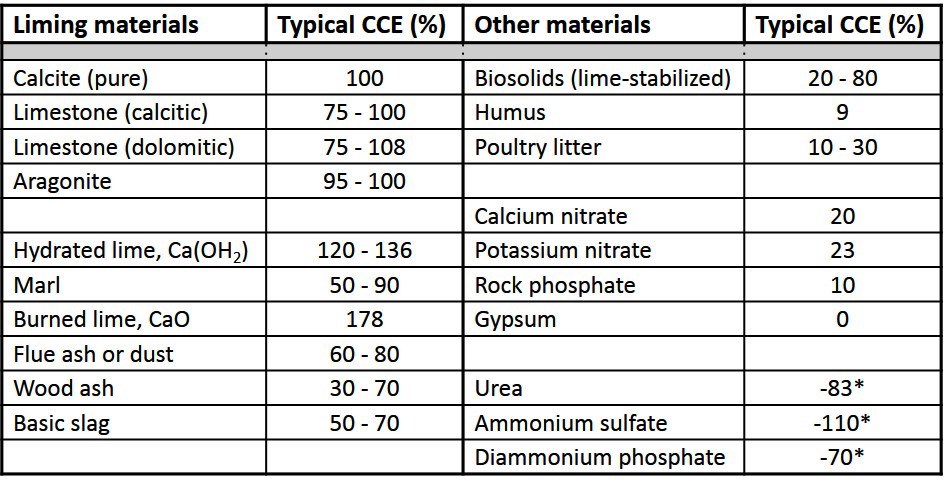Based upon the recommendations of a reputable soil pH report, this time of year may be a good time to apply lime to your soil. Depending on the crop you are planting, recommended liming requirements are intended to adjust the soil pH, so that availability of macronutrients such as nitrogen (N), phosphorus (P), and potassium (K) are optimized.
Ideal soil pH levels also stimulate efficient root growth, which results in more efficient fertilizer uptake, and water use by the plants. Once a liming requirement has been identified, you will need to select a liming material. Choosing the best liming material for your particular crop, however, can be daunting.
Acceptable liming materials have the following characteristics:
1. They reduce soil acidity and increase in soil pH.
2. They do not add any elements to the soil which may adversely alter the soil’s physical or chemical properties. (For example, fly ash may include high amounts of undesirable elements. Sodium compounds may negatively impact soil structure.)
Agricultural limestone (ag lime) is often the liming material of choice (either dolomitic or high calcium). Ag lime is carried by local fertilizer and home improvement retailers. As with fertilizer, ag lime costs can vary greatly, so shop around. Make sure you understand what the quote covers in terms of material price, delivery and spreading (if needed). Transport distance and acreage to be treated affects the final price, and in many cases, smaller applications can actually cost more.
You can get a lower quote, if you spread the material yourself, but time is money. The reality of spreading the material yourself is that you will need a front end loader, spreader and time to spread the material. Liming materials are often dusty, so unless you have a closed cab, a dust mask and safety glasses will lessen the risk of skin and eye irritation.
Since large quantities (tons per acre) of liming material are often required to make the needed pH adjustment, relatively inexpensive liming materials are often sought after. Some alternatives may provide additional soil nutritional or conditioning benefits. To assess these products for liming ability, you will need to know the calcium carbonate equivalent (CCE) or acid neutralizing capability of the material. Reputable dealers will supply you with that information. The CCE standard is set at 100%. In comparison, ag lime typically compares at 75-108 CCE, but if your product has a CCE of 50, you will need to apply 2 times more product to meet your soil report recommendation.
Lime spreader rate adjustments are typically limited to approximately 0.5 ton per acre, so do not expect spreaders to be capable of applying smaller increments. Unless it can be worked into the soil, applying more than 2-3 tons per acre of any liming material should be approached with caution. A quick consultation with your local county extension agent or Ag specialist is advised.
Table 1 provides CCE estimates of liming materials that may be available in your area. Table 1 serves as a guide, so request the CCE, (particularly of alternative liming materials) that you are considering. Additionally, there are other factors, such as particle size that will affect overall liming effectiveness. Smaller particles, or higher mesh values, react more quickly in soil than do larger particles. Florida has laws specifying acceptable mesh value ranges for the sale of ag lime in the state. Other states have similar laws.
Table 1. Liming and other materials that demonstrate a liming or acidifying effect. (The asterisk * indicates materials that acidify the soil.)

Use the following resources for more information on this subject:





